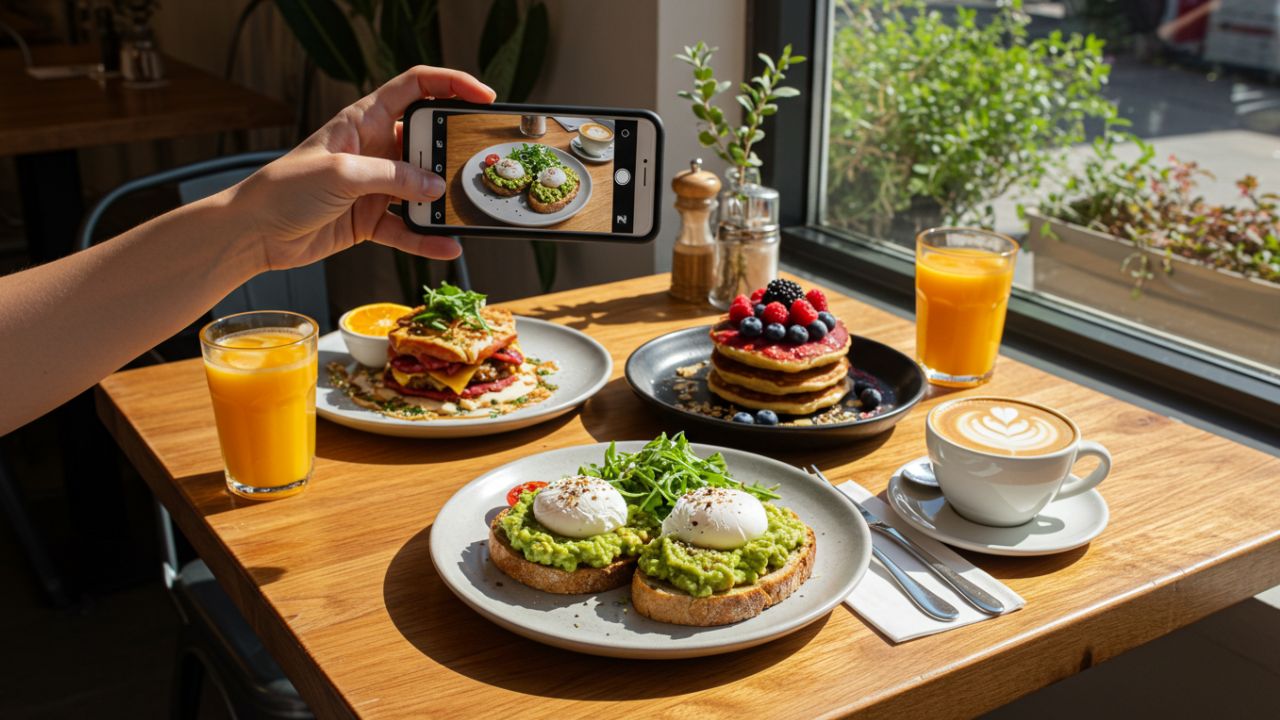In today’s digital landscape, Instagram has evolved from a simple photo-sharing app into a powerful marketing tool for businesses. For restaurants, in particular, Instagram can be a game-changer. It provides a visual platform that lets eateries showcase their dishes, ambiance, and personality, attracting both locals and tourists. This article dives deep into how restaurants can leverage Instagram to attract customers using compelling food photography.
1. Why Instagram Matters for Restaurants
Instagram is uniquely suited for the food industry because food is inherently visual. According to recent studies, over 1 billion people use Instagram each month, and more than 200 million visit at least one business profile daily. With features like Stories, Reels, and Instagram Shopping, the platform offers diverse ways to engage potential diners.
Restaurants that actively post high-quality food photos and behind-the-scenes content can:
- Increase brand visibility
- Build trust with new customers
- Foster a loyal community
- Encourage user-generated content
2. Building a Strong Instagram Presence
Before diving into the specifics of food photography, it’s essential to establish a cohesive and attractive Instagram profile.
2.1. Optimize Your Bio
- Use your restaurant’s name and a recognizable profile picture (like a logo or signature dish).
- Include a compelling description that highlights your cuisine and values.
- Add your location, business hours, and a link to your website or menu.
2.2. Choose a Consistent Aesthetic
- Define your brand colors and tones (warm, vibrant, muted, etc.).
- Use consistent filters or presets to maintain a unified look.
- Plan your feed layout using tools like Planoly or Later.
2.3. Hashtag Strategy Use a mix of:
- Popular hashtags (#Foodie, #InstaFood, #FoodPhotography)
- Location-specific tags (#NYCFoodie, #LAeats)
- Branded hashtags (#YourRestaurantName)
3. The Art of Food Photography
Photography is the centerpiece of any restaurant’s Instagram strategy. Stunning visuals stop users from scrolling and entice them to engage.
3.1. Equipment and Setup You don’t need a DSLR to capture mouthwatering food shots. A recent smartphone with a good camera and proper lighting can do wonders.
Tips:
- Use natural light. Shoot near windows during the day.
- Avoid harsh overhead lighting or your phone’s flash.
- Use a reflector or white foam board to bounce light.
3.2. Composition Techniques
- Top-Down Shots: Best for flat dishes like pizzas, bowls, and spreads.
- 45-Degree Angle: Great for burgers, pancakes, and layered items.
- Close-Ups: Showcase textures and ingredients.
- Rule of Thirds: Position the main subject off-center to create visual interest.
3.3. Styling Your Dishes Presentation matters. Use clean plates, garnish with fresh herbs, and include utensils or hands for a more relatable feel. Keep the background minimalistic to avoid distractions.
3.4. Editing and Enhancing Use apps like:
- Lightroom Mobile: For color correction and lighting adjustments.
- Snapseed: For selective editing.
- VSCO: For aesthetic filters.
4. Types of Instagram Content for Restaurants
To keep your feed engaging, diversify your content. Here are formats that work well:
4.1. Carousel Posts Perfect for showcasing a new menu, step-by-step dish preparation, or multiple angles of a meal.
4.2. Stories and Highlights Use Stories to share daily specials, customer reviews, behind-the-scenes prep, or polls. Save important Stories in Highlights for easy access.
4.3. Reels and Videos Short videos perform incredibly well. Consider:
- Time-lapse of dish preparation
- Chef introductions
- Customer testimonials
- Quick cooking tips
4.4. User-Generated Content (UGC) Encourage customers to tag your restaurant. Repost their content (with credit) to build community trust and engagement.
4.5. Giveaways and Contests Run promotions where users must follow your page, tag friends, and comment to win a free meal or voucher.
5. Caption Writing Tips
Captions complement your photos. A good caption can add context, humor, or urgency.
Examples:
- “Who’s ready for taco Tuesday? 🌮”
- “Say hello to our new brunch star: Avocado Toast Deluxe ✨ Available this weekend only!”
- “Behind every burger is a chef who cares. Swipe to meet ours! 🍿❤️”
Use emojis, keep it concise, and always include a CTA (e.g., “Tag a friend you’d share this with!”).
6. Influencer Collaborations
Partnering with food bloggers or local influencers can boost exposure. Choose individuals who align with your brand and have an engaged following.
Tips:
- Offer a free meal in exchange for a post or Story.
- Host an influencer tasting night.
- Ask them to create authentic content highlighting your specialties.
7. Analyzing Performance
Use Instagram Insights to track what’s working. Key metrics include:
- Engagement rate (likes, comments, saves, shares)
- Reach and impressions
- Profile visits and website clicks
Adjust your strategy based on high-performing posts. Post more of what your audience loves.
8. Real-Life Success Stories
Several restaurants have skyrocketed in popularity thanks to Instagram. For example:
- Black Tap Craft Burgers (NYC): Known for their extravagant milkshakes, their photogenic desserts made them a viral hit.
- Eggslut (LA): Their minimalist photos and foodie culture branding attracted thousands of visitors and long lines.
- Nusr-Et (Salt Bae): The viral video of Salt Bae salting meat turned into a global restaurant empire.
Conclusion
Instagram is more than a social network—it’s a visual menu, brand builder, and customer magnet. By mastering food photography, curating engaging content, and interacting with your community, your restaurant can turn scrolling thumbs into loyal customers.
Whether you’re a quaint local bistro or a bustling fast-casual chain, investing time and creativity into your Instagram presence can yield delicious rewards.

Leave a Reply